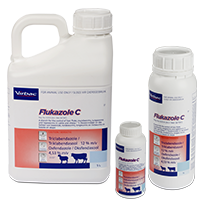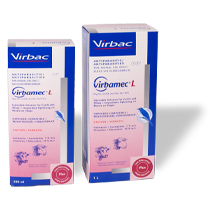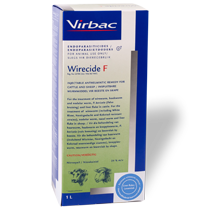
Why Liver Health?
Although all organs in the animal’s body are important, the liver is probably one of the most important in view of the sheer number of functions it performs. In fact, it is known to have more than 500 functions. Therefore, it is obvious that if the liver does not function optimally the animal will not either.
These are the most important functions that the liver performs:
- Generating energy from nutrients (acetic acid, propionic acid, lactic acid)
- Forming protein from nitrogen and amino acids (utilising nitrogen)
- Forming antibodies against diseases (improves vaccine response)
- Forming cholesterol from stored intestinal fat (precursor of sex hormones)
- Forming bile salts (digestion and vitamin-A production)
- Storing trace elements (it is the main storage organ for various trace elements)
- Neutralising toxins (detoxing the body)
- Capturing bacteria (like those from the digestive tract that could end up in the blood)
In practical terms, the liver may be compared to a “pantry and stove”. The pantry is the storeroom from where the ingredients come to prepare food on the stove. If all four stove plates are fully functional lots of food can be prepared simultaneously. If one of them does not work, the other three must work longer and harder to prepare the same amount of food. If only two are working, it becomes very difficult indeed, and if only one is working, it is virtually impossible to prepare the necessary amount of food per day. Similarly, depending on the extent of the animal’s liver damage, it will eventually no longer be able to keep up and its reproduction, production, and immunity functions will suffer.
The parasite:
Unless it is controlled, the sheep liver fluke (Fasciola hepatica) and giant liver fluke (Fasciola gigantica) can damage the animal’s “pantry and stove” to such an extent that the farmer can suffer huge financial losses.
Habitat and spread:
Liver fluke is very common in the eastern parts of the country, where conditions are favourable for its intermediate host (the freshwater snail) to survive. Places with slow-moving water, such as marshes and swamps, as well as irrigated pastures and dams, can be suitable habitats and can serve as the source of the primary infection. Secondary infection can take place via pumped water coming from such sources.
Lifecycle of the liver fluke:
- The mature liver fluke lays eggs, which are then excreted in the animal’s dung.
- Under favourable conditions, the eggs hatch and form the miracidia.
- The miracidia penetrate the intermediate host (freshwater snail) and develop multiple cercaria.
- The cercaria leave the freshwater snail and form the infectious metacercaria that attach themselves to grass.
- The metacercaria are ingested by the animal when grazing and follow the digestive tract until they reach the small intestine.
- In the small intestine, they bore through the intestinal wall and end up in the body cavity. They migrate back and forth for around two weeks until they reach the liver.
- After they have penetrated the liver, the immature liver fluke migrates back and forth until it ends up inside a bile duct (this takes two to eight weeks).
- In the bile duct, it develops into an adult (this takes eight to twelve weeks) to complete the lifecycle by laying eggs again.
Damage caused:
- The migrating stadia between the small intestine and liver can cause haemorrhage.
- The migrating young-adult stadia in the liver cause haemorrhage and damage the liver tissue, leading to unproductive scar tissue.
- The development from immature to mature stadia in the bile ducts causes irritation to which the body reacts. The bile ducts thicken and may even form a “panhandle” where the bile duct becomes closed off, no longer transporting bile.
Bleeding caused by migrating liver fluke
Bleeding spots caused by migrating liver fluke
Necrosis caused by migrating liver fluke
Blocking of bile ducts by adult liver fluke
Thickening and calcification of bile ducts caused by adult liver fluke
Consequences:
Liver fluke can damage the liver, to such an extent, that it:
- Deprives the animal of energy and protein (loss of condition, fertility, and growth)
- Limits the storage ability of trace minerals, which makes supplementation with trace mineral ineffective and leads to sub-optimal trace-mineral levels (impaired immunity, reproduction, and production)
- Leads to a vitamin-A shortage, even on green pasture; and negatively affect all the other functions previously mentioned.
Control / products:
By controlling liver fluke as effectively as possible, the damage can be limited. To this end, controlling the early-adult stadia that penetrate the liver and then migrate is critical! Therefore, timeous treatment and the use of effective remedies are of cardinal importance.
- Oral dosing: Triclabendazole is the active ingredient of choice to control the liver fluke in the liver. Keep in mind that no treatment can control the migrating stage from the small intestine to the liver! (< two weeks old) Oral dosing is the most effective way to control the early adult stage (≥ two weeks old), which is also the most damaging.
- Injectable treatments control only certain stadia in the liver. The most commonly used products contain clorsulon/ivermectin, as well as those containing closantel, only control the adult stages in the bile ducts. Injectable treatments containing closantel may assist in controlling the immature and mature liver fluke at the higher recommended dosage.
Control programme:
To limit the damaging effect of the liver fluke, the control programme should aim to control the earliest possible stage as effectively as possible and to prevent contamination of pastures (preventing the adults from laying eggs). A control programme should be based on the particular farms’ local conditions (feed-flow programme, pasture management, and production system). A programme meant for the Highveld should include at least the following treatments:
- Late-summer/early-winter treatment (April/May) – to limit liver damage and to enter winter as “clean” as possible. Preferably, treat two weeks after the first decent frost (when the likelihood of reinfection is lower) or when the animals are moved to “clean” pastures. The treatment of choice is Flukazole C.
- Late-winter/early-spring treatment (Aug/Sept) – to control reinfection and the adult liver fluke (reducing contamination of pastures with eggs). The treatment of choice is Flukazole C. Virbamec L may be considered if tick control is also needed.




